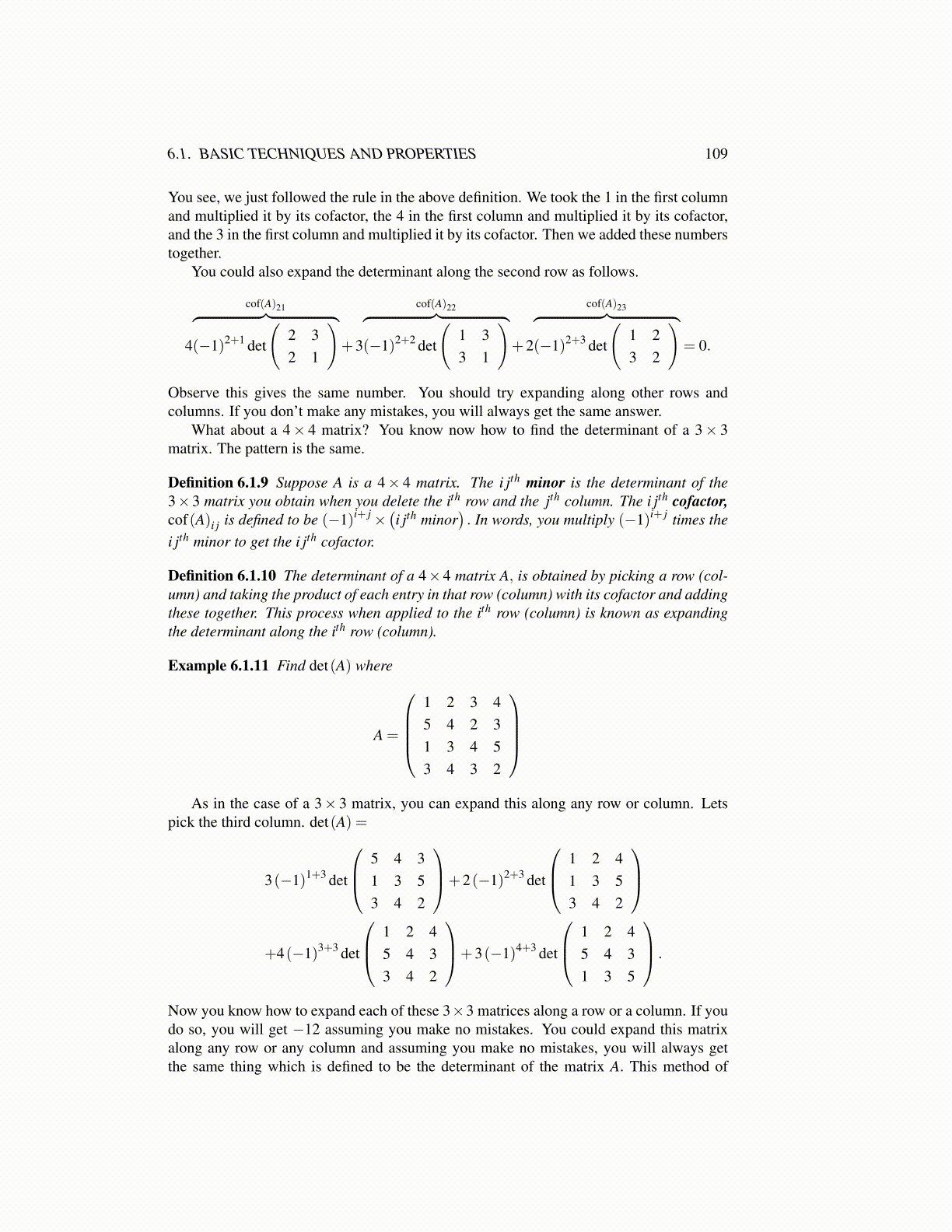
6.1. BASIC TECHNIQUES AND PROPERTIES 109
You see, we just followed the rule in the above definition. We took the 1 in the first columnand multiplied it by its cofactor, the 4 in the first column and multiplied it by its cofactor,and the 3 in the first column and multiplied it by its cofactor. Then we added these numberstogether.
You could also expand the determinant along the second row as follows.
4
cof(A)21︷ ︸︸ ︷(−1)2+1 det
(2 32 1
)+3
cof(A)22︷ ︸︸ ︷(−1)2+2 det
(1 33 1
)+2
cof(A)23︷ ︸︸ ︷(−1)2+3 det
(1 23 2
)= 0.
Observe this gives the same number. You should try expanding along other rows andcolumns. If you don’t make any mistakes, you will always get the same answer.
What about a 4× 4 matrix? You know now how to find the determinant of a 3× 3matrix. The pattern is the same.
Definition 6.1.9 Suppose A is a 4× 4 matrix. The i jth minor is the determinant of the3×3 matrix you obtain when you delete the ith row and the jth column. The i jth cofactor,cof(A)i j is defined to be (−1)i+ j×
(i jth minor
). In words, you multiply (−1)i+ j times the
i jth minor to get the i jth cofactor.
Definition 6.1.10 The determinant of a 4×4 matrix A, is obtained by picking a row (col-umn) and taking the product of each entry in that row (column) with its cofactor and addingthese together. This process when applied to the ith row (column) is known as expandingthe determinant along the ith row (column).
Example 6.1.11 Find det(A) where
A =
1 2 3 45 4 2 31 3 4 53 4 3 2
As in the case of a 3× 3 matrix, you can expand this along any row or column. Lets
pick the third column. det(A) =
3(−1)1+3 det
5 4 31 3 53 4 2
+2(−1)2+3 det
1 2 41 3 53 4 2
+4(−1)3+3 det
1 2 45 4 33 4 2
+3(−1)4+3 det
1 2 45 4 31 3 5
.
Now you know how to expand each of these 3×3 matrices along a row or a column. If youdo so, you will get −12 assuming you make no mistakes. You could expand this matrixalong any row or any column and assuming you make no mistakes, you will always getthe same thing which is defined to be the determinant of the matrix A. This method of